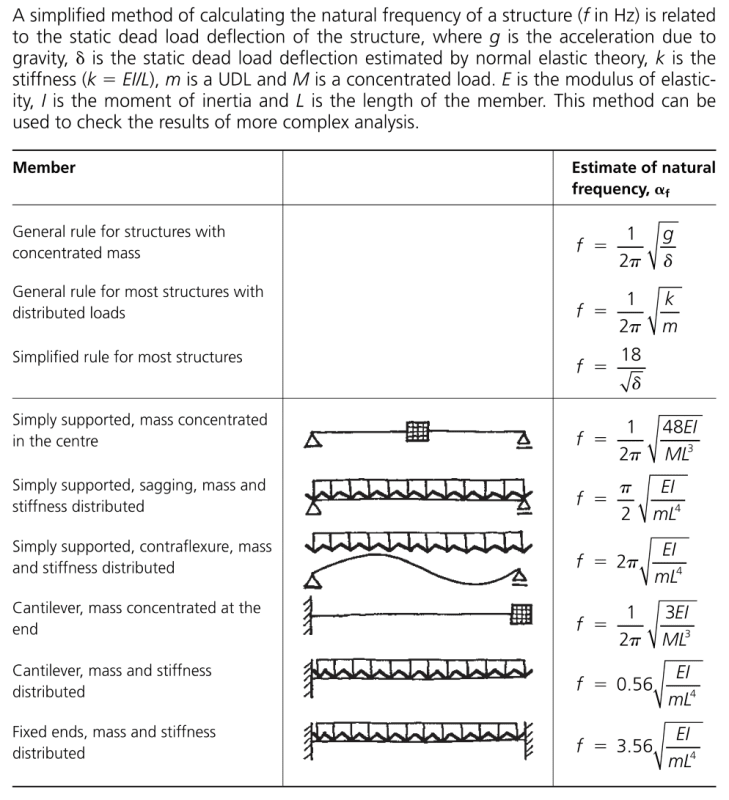I had modeled the frame in an analysis program with the following results:
Beam Deflection: Model = 0.00048"
Hand Calc = 0.000394" (simple beam = 5wL^4/384EI)
The frame analysis program includes shear deformation which I have calculated to be 0.000094"
Beam Deflection: Model = 0.00048"
Hand Calc = 0.000488" (including shear deformation)
Column Deformation: Model = 0.000617"
Hand Calc = 0.000616"
So the deformations appear to be quite consistent.
Attached are derivations I have developed for frequency calculations for 3 cases:
1) Uniform Load; Simple Beam
2) Concentrated Load; Simple Beam
3) Axial Load; Column
In all three cases my derivation concludes f =
0.16 x (g/delta)^0.5.
AISC Design Guide 11 uses f =
0.18 x (g/delta)^0.5
Curiously, the coefficient (Kn) in
Roark's Formulas for Stress and Strain is consistent with 0.18 (Kn = 9.87) for uniform loads but 0.16 (Kn = 6.93) for concentrated load.
[RE: Table 16.7, Page 769:
]
So I have two new questions I am seeking assistance with:
1) What accounts for the difference between my derivation(s) and the AISC Design Guide/Roark (assuming my derivation is accurate).
2) What other methodology would a frame analysis program use that would yield different results in the calculation of the frequency? (I am a bit reluctant blindly accepting results from a "black box").
Thank you in advance for any input.
JKW

![[smile] [smile] [smile]](/data/assets/smilies/smile.gif)
